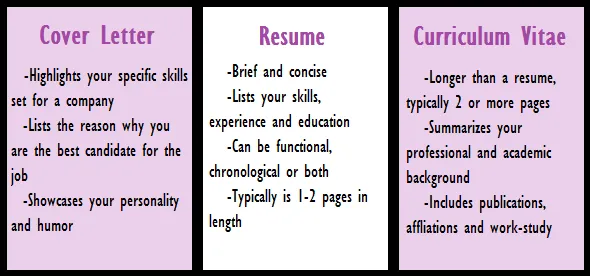Understanding Cover Letters and Curriculum Vitae (CV)
Navigating the job application process can be tricky, especially when it comes to understanding the different documents you need to submit. Two of the most important documents are the cover letter and the curriculum vitae (CV), also known as a resume. Both serve to present your qualifications to potential employers, but they do so in distinct ways. Understanding the differences between these two documents is crucial for making a strong impression and increasing your chances of landing your desired job. This guide will delve into the specifics of each document, providing clarity on when to use each and how to craft them effectively. The goal is to equip you with the knowledge to make informed decisions about your application materials, ensuring you present yourself in the best possible light.
What is a Cover Letter
A cover letter is a concise document that accompanies your resume when you apply for a job. It serves as an introduction, giving you the opportunity to highlight your key skills, experience, and why you are a good fit for the specific role and company. Unlike a CV, which provides a comprehensive overview of your entire career history, a cover letter is tailored to the specific job you’re applying for. It allows you to demonstrate your personality, enthusiasm, and understanding of the employer’s needs. Think of it as your first personal interaction with the hiring manager, setting the tone for your application and persuading them to read your CV.
Purpose of a Cover Letter
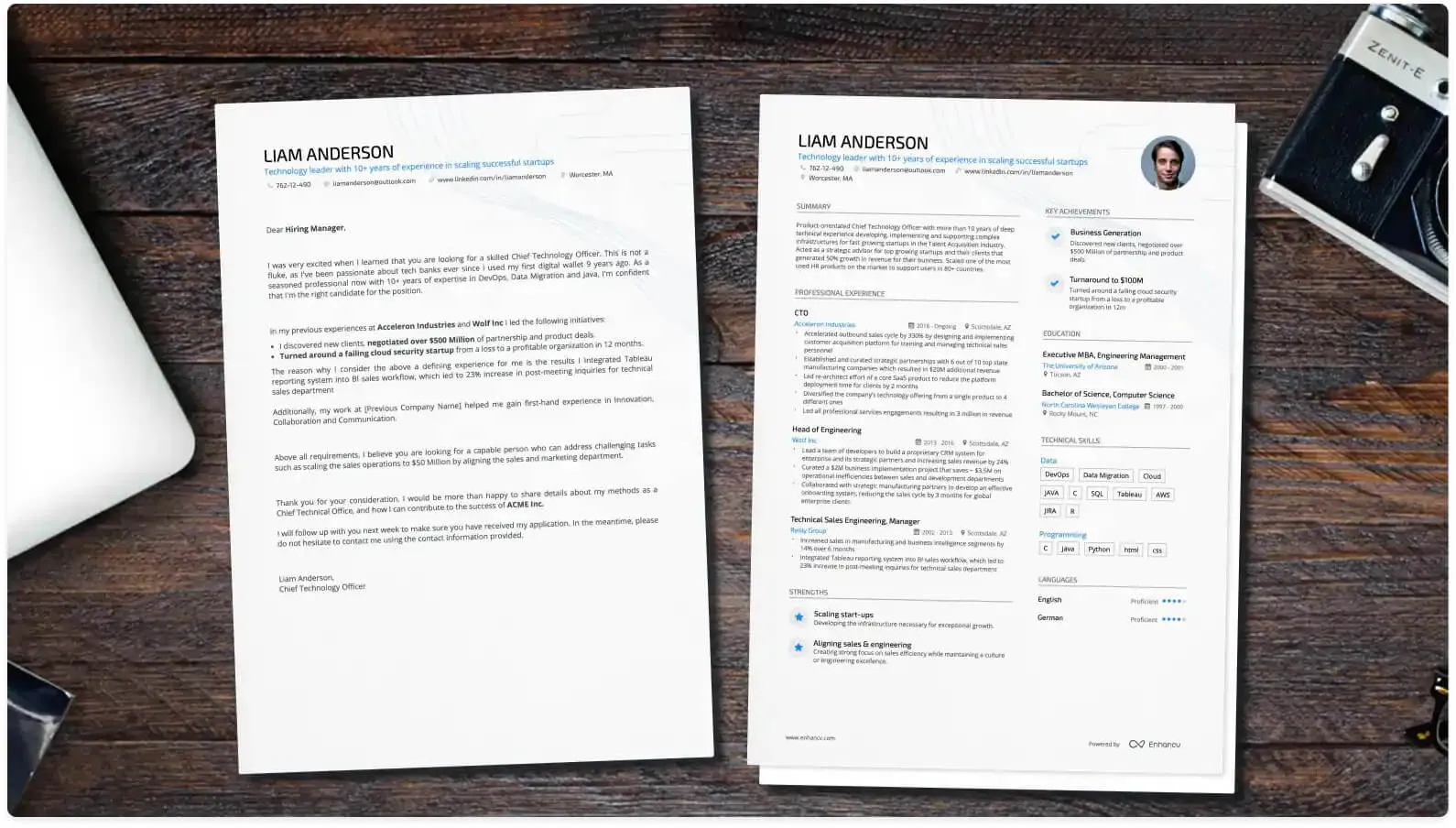
The primary purpose of a cover letter is to express your interest in the position and the company. It’s a chance to explain why you are the ideal candidate by connecting your skills and experiences to the job requirements. A well-written cover letter showcases your communication skills, your understanding of the role, and your genuine interest in contributing to the organization’s goals. It helps the hiring manager understand your motivations and see how your aspirations align with the company’s mission. Furthermore, a cover letter provides context to your resume, emphasizing the most relevant aspects of your background and demonstrating how you can bring value to the company. It adds a layer of personality that is often missing in a CV.
Key Components of a Cover Letter
A typical cover letter includes several essential components. Start with a professional salutation addressing the hiring manager by name if possible. Next, the introductory paragraph should state the position you are applying for and how you found the opportunity. The body paragraphs are where you highlight your key skills and experiences, providing specific examples to support your claims. Tailor these examples to match the job description’s requirements, showing that you have the necessary qualifications. Finally, the closing paragraph should reiterate your interest, express your gratitude for the opportunity, and include a call to action, such as mentioning your availability for an interview. Always proofread your cover letter carefully for any errors in grammar or spelling.
What is a Curriculum Vitae (CV)
A Curriculum Vitae, or CV, is a detailed document that provides a comprehensive overview of your academic and professional history. Unlike a cover letter, a CV typically includes an extensive record of your educational background, publications, research experience, awards, and other achievements. It is a more in-depth document than a resume and is generally longer, often spanning several pages. A CV is commonly used in academic, scientific, and research-oriented fields, where a detailed account of your qualifications is essential. The CV is designed to give a complete picture of your career trajectory, showcasing your expertise and contributions to your field.
Purpose of a CV
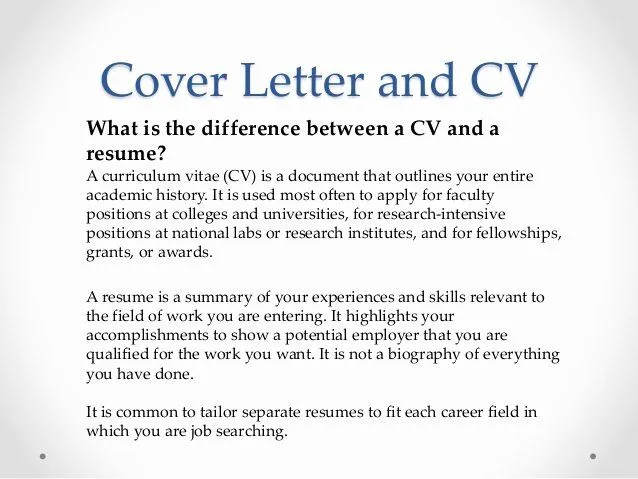
The primary purpose of a CV is to provide a detailed and comprehensive account of your professional and academic history. It serves as a thorough record of your qualifications, skills, and achievements, particularly in academic and research settings. For those seeking positions in academia, a CV is an essential tool, showcasing publications, presentations, and research experience. It also allows for the presentation of fellowships, grants, and other awards you may have received. A CV is a detailed document to highlight your contributions to your field and your professional development. The goal is to provide enough information so that the hiring manager can quickly assess your qualifications.
Key Components of a CV
A CV typically includes specific sections that showcase your academic and professional background. These sections include your contact information, educational background (including degrees, institutions, and dates), professional experience (including job titles, responsibilities, and dates), publications, research experience, presentations, grants and fellowships, awards and honors, skills, and professional affiliations. Depending on your field and experience, you may also include sections for teaching experience, volunteer work, or other relevant activities. The structure of a CV allows you to highlight the most relevant parts of your qualifications, making it a detailed record of your career and achievements.
Cover Letter vs CV Key Differences
The key differences between a cover letter and a CV lie in their purpose, length, and the information they present. A cover letter is a short, tailored introduction that emphasizes your interest in a specific job and highlights relevant skills. A CV, on the other hand, is a detailed document that comprehensively outlines your entire academic and professional history. The cover letter’s main purpose is to persuade the reader to read your CV, while the CV aims to provide a complete record of your credentials. Knowing these differences can help you better prepare your job application.
Length and Structure
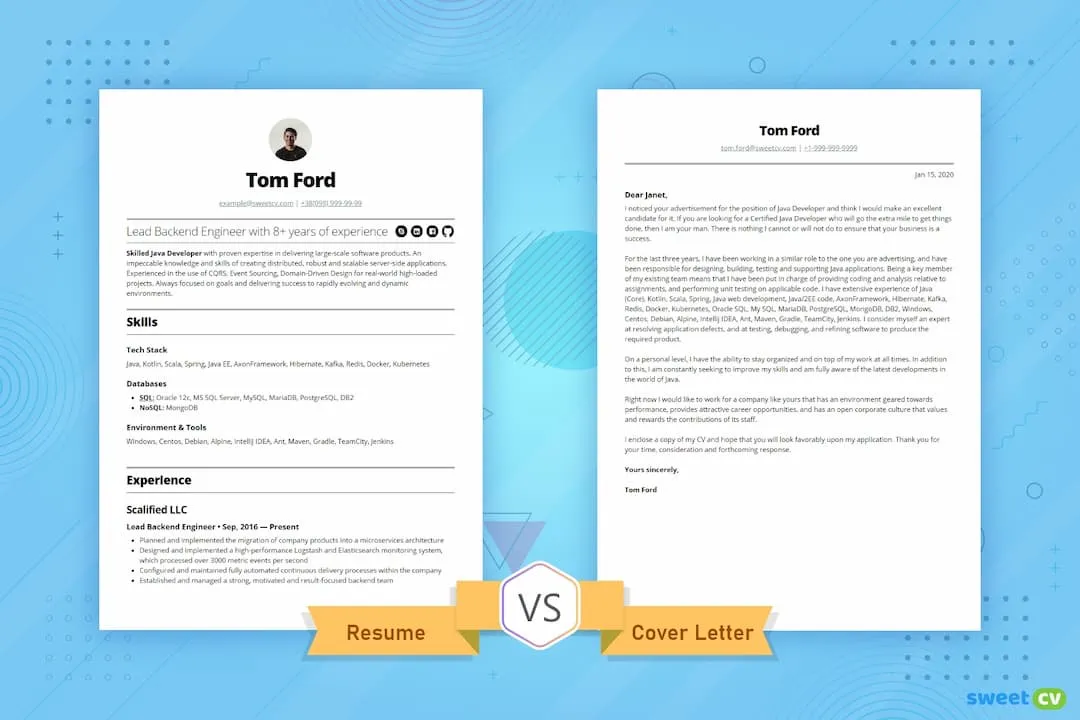
A cover letter is typically one page long, concise, and focused. It should be written in a formal tone and divided into clear paragraphs. A CV is usually longer, often spanning multiple pages, and it follows a detailed structure, with sections for education, experience, publications, and other relevant qualifications. The structure is meant to give the hiring manager a clear picture of all relevant information, depending on the requirements of the role.
Target Audience and Purpose
A cover letter targets the hiring manager for a specific job and aims to express interest and suitability for that role. A CV caters to a broader audience, providing a detailed record of your qualifications for a range of positions, particularly in academia and research. The purpose of the cover letter is to grab attention, while the CV’s primary goal is to comprehensively present your background.
Content and Focus
A cover letter focuses on your key skills, experiences, and why you are a good fit for the specific job. It emphasizes your personality and enthusiasm. A CV focuses on a comprehensive presentation of your academic and professional history. It includes details on education, research, publications, and other related accomplishments, with the purpose of demonstrating your qualifications for specific positions.
When to Use a Cover Letter
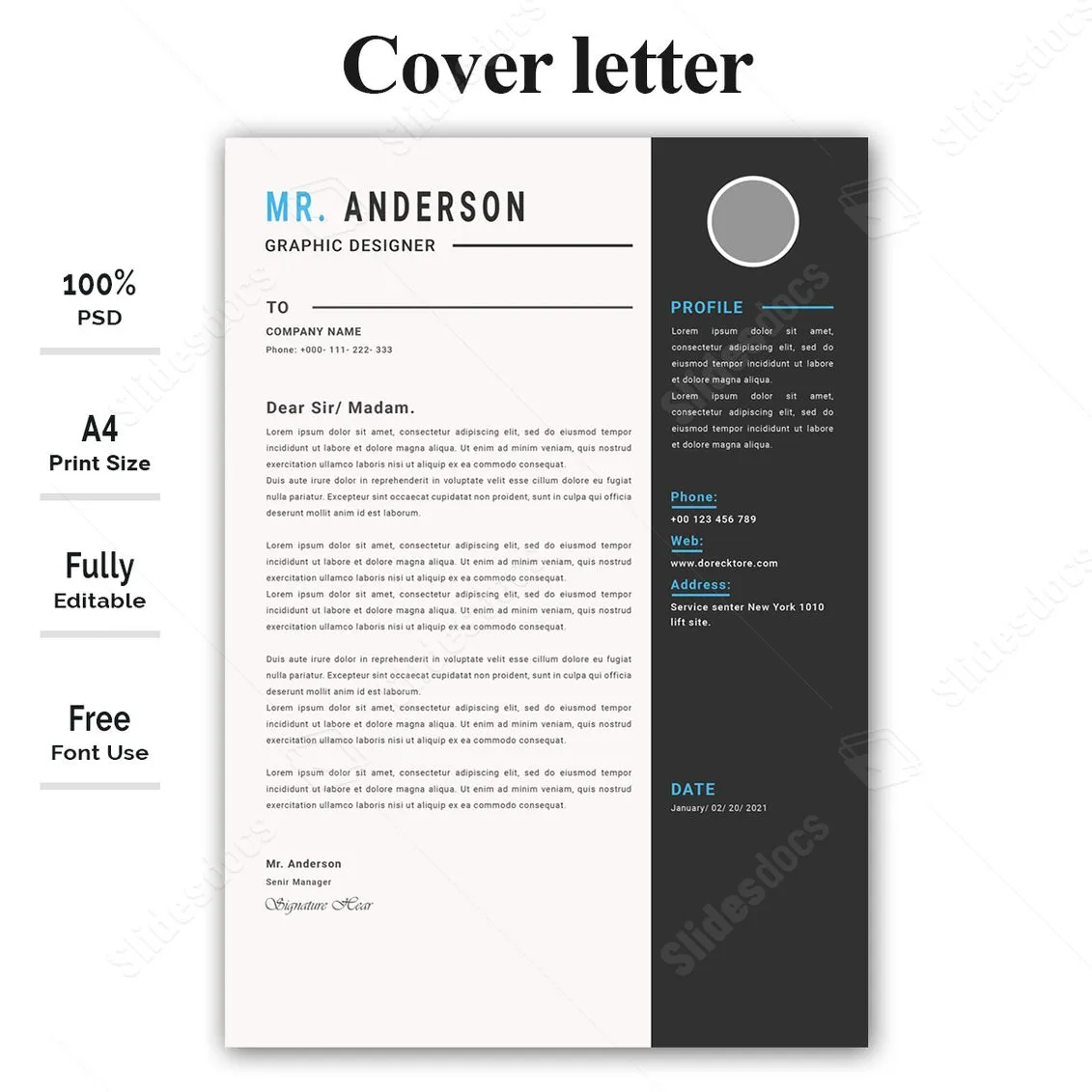
A cover letter is typically used in many situations. When applying for a job, a cover letter is almost always required to introduce yourself and highlight your qualifications for the specific position. In addition, it is useful when you want to make a personal connection with the hiring manager, expressing your genuine interest in the company and the role. Any time you want to explain your career goals, or when you have an employment gap, a cover letter allows you to provide additional context. The best way to approach this is to research the role and company to tailor the letter.
Job Applications
When applying for jobs, a cover letter is essential. It allows you to highlight specific skills and experiences that align with the job description, providing an introduction to the hiring manager. By tailoring the cover letter to each job, you demonstrate your understanding of the role and the company’s needs.
Networking
When networking, a cover letter can be used to introduce yourself and explain your career interests. It is useful for reaching out to potential employers, requesting informational interviews, or following up after networking events. Using a cover letter in this context allows you to explain your career goals in a professional and targeted manner.
When to Use a CV
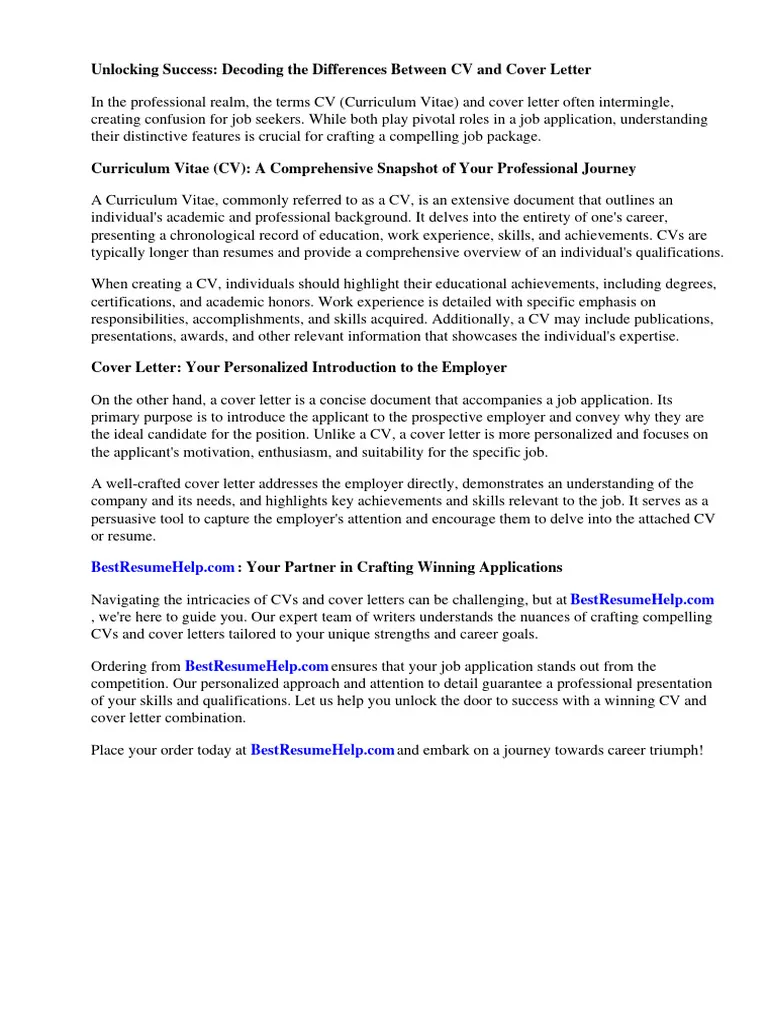
A CV is typically used in several situations, most notably in academic and research settings. It is the standard document for applying for academic positions, research grants, and fellowships. The best approach to this is to create an updated version of your CV.
Academic Positions
When applying for academic positions, a CV is necessary to present your educational background, research experience, publications, and other qualifications. A CV gives a detailed account of your academic and professional achievements.
Research Grants
When applying for research grants, a CV is required to demonstrate your qualifications and your research experience. The CV allows you to showcase your publications, presentations, and other related accomplishments, giving the reviewers a thorough overview of your expertise.
International Job Applications
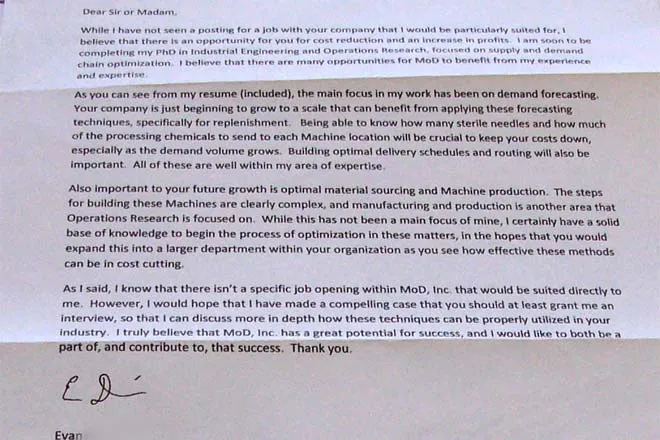
In some countries, a CV is the standard document for all job applications, regardless of the field. If you are applying for jobs internationally, it is important to understand the local requirements. When in doubt, it is best to provide a CV as it offers more comprehensive detail.
Tips for Writing Effective Documents
Both cover letters and CVs require careful attention to detail, content, and format to make a strong impression. Tailoring each document to the specific job or opportunity is essential. Reviewing your documents for errors in grammar, spelling, and formatting is also very important. Proofreading is one of the most important steps.
Cover Letter Writing Tips
When writing a cover letter, it’s crucial to tailor it to the specific job and company. Highlight your relevant skills and experiences, providing specific examples to support your claims. Focus on what you can offer the employer and how you can add value to the organization. Make sure to use a professional tone and format, addressing the hiring manager by name if possible, and proofread your letter carefully for any errors.
CV Writing Tips
When writing a CV, organize the content in reverse chronological order, with the most recent information at the top. Include all relevant educational background, professional experience, and publications. Use clear and concise language, and be sure to proofread the document for any errors. Consider adding a summary or objective statement to highlight your career goals. Maintain a consistent format, making your CV easy to read and navigate.
Common Mistakes to Avoid
Common mistakes to avoid include generic cover letters that aren’t tailored to the job, using jargon or overly complex language, and providing incorrect information. Make sure you are not too vague in your descriptions and that your formatting is consistent. Also, make sure you are not including too many irrelevant details. For CVs, avoid omitting important details like dates and job responsibilities, providing inaccurate information, and using a disorganized format. Make sure to proofread both documents carefully for any errors.
Choosing the Right Document
Choosing between a cover letter and a CV depends on the specific job or opportunity you are pursuing. In general, if you are applying for a job in a non-academic setting, you will need a cover letter and a resume. If you are applying for an academic or research position, you will need a CV. Always review the job posting or application instructions to determine the required documents. Consider the context and the expectations of the employer.
Assessing Your Needs
Assess your needs by considering the type of job or opportunity you are targeting. Determine whether you need a document that provides a general overview of your qualifications (resume) or a detailed account of your academic and professional history (CV). Tailor your documents to the specific requirements of each application to maximize your chances of success. Always do some research before applying.
Tailoring Your Documents
Tailor your cover letter to each specific job, highlighting the skills and experiences that are most relevant to the position. Customize your CV to include the qualifications most pertinent to the job. Proofread both documents carefully, ensuring they are free of errors and that they meet the expectations of the employer. This will help you showcase that you are the perfect person for the role.
Resources and Further Reading
To further enhance your job application skills, explore resources such as career websites, guides, and professional resume and cover letter writing services. These resources provide valuable insights and templates that can help you create compelling documents that will grab the hiring managers attention. Always make sure the information is up to date.
